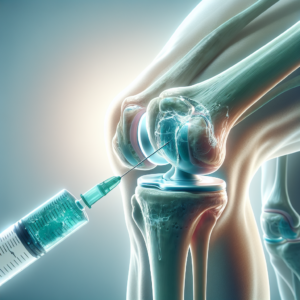Ouch! Knee pain can be debilitating, affecting millions of people worldwide. For those seeking relief, knee gel injections have emerged as a promising treatment option. These injections, which involve the application of a gel-like substance into the knee joint, have gained popularity due to their potential to alleviate pain and improve mobility. However, many patients are concerned about the knee gel injections cost and how it might impact their decision to pursue this treatment.
Comprehending the cost of knee gel injections is crucial for patients considering this therapy. The expense can vary widely depending on factors such as geographic location, healthcare provider, and insurance coverage. This article aims to explore how much gel knee injections cost, the factors that influence pricing, and whether Medicare covers knee gel injections. Additionally, it will delve into the benefits and risks associated with this treatment, providing readers with a comprehensive overview to help them make informed decisions about their knee health.
What are Knee Gel Injections exactly?
Knee gel injections, also known as viscosupplementation, are a medical treatment used to alleviate knee pain and improve joint function. These injections contain hyaluronic acid, a substance naturally found in the synovial fluid of healthy joints. Synovial fluid acts as a cushion and lubricant, allowing the knee to move smoothly and without pain. In people with osteoarthritis, the synovial fluid becomes watery, leading to reduced joint protection and increased discomfort.
The purpose of knee gel injections is to restore the proper viscosity of the synovial fluid, enhancing lubrication and shock absorption within the joint. In some cases, this therapy may even stimulate the body to produce more of its own hyaluronic acid, further improving joint health.
The Different Types of Knee Gel Iimenjections
There are several types of knee gel injections available, which vary in their source, structure, molecular weight, and dosing schedule. These injections can be categorized into high, medium, and low molecular weight formulations. High-molecular weight hyaluronic acid is generally considered more effective at lubricating the joint and relieving pain due to its thicker and more viscous nature.
The treatment regimen for knee gel injections can vary depending on the specific product used. Some formulations require a series of three to five injections spaced one week apart, while others may involve a single injection of a highly concentrated form of hyaluronic acid.
How The Procedure Works
The knee gel injection procedure is relatively straightforward and can be performed in a healthcare provider’s office. Here’s a step-by-step breakdown of how it works:
- The injection site is cleaned and sterilized.
- X-ray or ultrasound guidance may be used to locate the precise injection site within the knee joint.
- Local anesthesia is administered to numb the area.
- If necessary, excess fluid is drawn out from the joint using a hollow needle.
- The hyaluronic acid gel is slowly injected into the joint.
- The needle is removed, and a bandage is applied to the injection site.
Patients can typically go home immediately after the procedure. It’s important to avoid strenuous activities involving the knee, such as jogging or heavy lifting, for the first 48 hours following the injection. Light walking is generally acceptable, but overuse or putting too much weight on the knee should be avoided.
Conditions treated
Knee gel injections are primarily used to treat osteoarthritis of the knee. They are often recommended for patients who have not responded well to other treatments such as acetaminophen, exercise, or physical therapy. These injections can be particularly beneficial for individuals with mild to moderate arthritis who are not yet candidates for knee replacement surgery.
The effects of knee gel injections may take several weeks to become noticeable, but once they start working, the benefits can last for several months. Many patients report reduced pain and improved mobility lasting anywhere from six months to a year. It’s worth noting that the effectiveness of these injections can vary among individuals, and they may become less effective as arthritis progresses.
While knee gel injections are not a cure for osteoarthritis, they can provide significant relief and help postpone the need for more invasive procedures like knee replacement surgery. As with any medical treatment, it’s essential to discuss the potential benefits and risks with a healthcare professional to determine if knee gel injections are an appropriate option for managing knee pain and improving joint function.

Average Cost of Knee Gel Injections
The cost of knee gel injections can vary significantly, influenced by several factors. Understanding these costs is crucial for patients considering this treatment option for knee osteoarthritis.
Factors Fffecting Cost
Several elements contribute to the overall expense of knee gel injections. The type of injection plays a significant role in determining the cost. Hyaluronic acid injections are generally less expensive than platelet-rich plasma (PRP) injections, which involve a more complex process of extracting and concentrating the patient’s blood.
The location and healthcare provider chosen for the procedure also impact the price. Larger hospitals and specialized orthopedic clinics often charge more for their services compared to smaller, local practices. Additionally, the number of injections required affects the total cost. Most patients need a series of injections, typically spaced a few weeks apart, to achieve the full benefits of the treatment.
Price Range Without Insurance
For those without insurance coverage, knee gel injections can represent a substantial expense. The cost of a single hyaluronic acid injection typically ranges from $500 to $1,500. PRP injections, on the other hand, can cost anywhere from $1,000 to $3,000 per treatment.
It’s worth noting that some facilities offer more affordable options. For instance, on MDsave, the cost of a Gel One Injection ranges from $990 to $3,050. Patients with high-deductible health plans or those without insurance can compare prices and potentially save money by shopping around.
Other types of knee injections also vary in cost. Stem cell therapy is often one of the more expensive options, frequently exceeding $3,000 per treatment. Lipogems treatment costs can be quite high as well, ranging from $2,000 to $4,000. Arthrosamid, a single-injection treatment, typically costs between $1,500 and $3,000 per injection.
Corticosteroid injections emerge as a more cost-effective option for knee pain relief. Prices for these injections can vary widely but typically range from $20 to $300 per injection, with generic options available at the lower end of the cost spectrum.
Insurance Coverage
Insurance coverage for knee gel injections can significantly reduce out-of-pocket expenses for patients. However, coverage varies depending on the insurance provider and specific plan.
Medicare beneficiaries may be eligible for coverage of knee gel injections under certain circumstances. Medicare Part B, which covers outpatient medical services, may pay for hyaluronic acid injections if they’re deemed medically necessary by a doctor. To be eligible, patients need to have a documented diagnosis of knee osteoarthritis and have failed to respond to more conservative treatments.
If these criteria are met, Medicare will cover 80% of the approved cost of the knee gel injections, leaving the patient responsible for the remaining 20% as coinsurance. Patients will also need to pay their Part B deductible before Medicare coverage begins.
It’s important to note that Medicare coverage for knee gel injections can vary depending on the specific type of injection received. While hyaluronic acid injections are generally covered, PRP injections may not be, as they’re often considered an experimental treatment by Medicare.
For those with private insurance, most health benefits plans cover the cost of viscosupplement injections such as Synvisc and Neovisc. These are typically covered as ‘injections’ or ‘devices,’ not as medications. Patients can request pseudo DIN numbers for these injections from their physician to check coverage with their insurance company.
It’s crucial for patients to contact their insurance providers to verify coverage for knee gel injections, as policies can vary. Some insurers may require prior authorization or have specific criteria that must be met before approving coverage for this treatment.

Benefits and Risks:
Potential benefits
Knee gel injections have emerged as a promising treatment option for individuals suffering from osteoarthritis. These injections can provide significant relief and improve the quality of life for many patients. One of the primary benefits is pain reduction, which can be substantial for those who have not responded well to other treatments such as acetaminophen, exercise, or physical therapy. The injections work by restoring the viscoelasticity of synovial fluid, enhancing lubrication and shock absorption within the joint.
Many patients experience improved mobility and function after receiving knee gel injections. This increased range of motion allows individuals to engage in daily activities with greater ease and comfort. For some, the treatment may even help postpone or avoid the need for knee replacement surgery, which is a more invasive procedure.
The effects of knee gel injections can last for several months, with some patients reporting relief for up to a year or more. This long-lasting benefit is particularly advantageous compared to other short-term pain management options. Additionally, the treatment has the potential to slow the progression of arthritis, although more research is needed to fully understand this aspect.
Possible side effects
While knee gel injections are generally considered safe, it’s important to be aware of potential side effects. The most common adverse reactions are typically mild and localized to the injection site. These may include temporary pain, swelling, redness, or warmth in the knee area. Some patients might experience a slight increase in knee pain immediately after the injection, but this usually subsides within a few days.
In rare cases, more serious side effects can occur. These may include:
- Infection at the injection site
- Allergic reactions, particularly in individuals with sensitivities to ingredients in the gel
- Pseudo-septic reactions, where the knee becomes swollen, red, and painful
- Bleeding or bruising at the injection site
It’s crucial to note that these more severe complications are uncommon. However, patients should contact their healthcare provider immediately if they experience any unusual or persistent symptoms following the procedure.
Who is a good candidate
Knee gel injections are not suitable for everyone, and determining good candidates is essential for maximizing treatment efficacy. Generally, individuals with mild to moderate osteoarthritis of the knee who have not found sufficient relief from other conservative treatments are considered good candidates for this therapy.
Ideal candidates typically:
- Experience moderate to severe knee pain when walking, climbing stairs, or engaging in physical activities
- Have not responded adequately to other non-surgical treatments such as physical therapy or pain medications
- Do not have significant mechanical or alignment issues with their knees that would require surgical intervention
- Are looking for an alternative to long-term use of pain medications or to delay knee replacement surgery
It’s important to note that knee gel injections may be less effective for individuals with advanced osteoarthritis or those with severe joint damage. Additionally, patients with active knee joint infections, skin infections near the injection site, or certain allergies (such as to eggs or poultry products in some formulations) may not be suitable candidates for this treatment.
The decision to undergo knee gel injections should be made in consultation with a healthcare professional who can assess individual circumstances and determine if this treatment is appropriate. Factors such as overall health, medical history, and specific knee condition will be taken into account when recommending this therapy.
Here are some FAQs about the knee gel injections cost:




